- Our History
- The History of Neurology and Timeline
- Timeline
- William G. Spiller, Chair
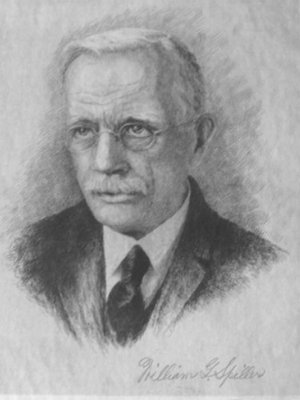
William G. Spiller, Chair, 1915 — 1937
Was born in Baltimore, MD and graduated University of Pennsylvania School of Medicine in 1892. After graduation, he spent 4 years in Europe studying with William Gowers (London), Hermann Oppenheim (Berlin), Joseph Dejerine (Paris), and Ludwig Edinger (Frankfurt) to learn anatomy and physiology. He returned to Philadelphia in 1896, and took a job at the new Philadelphia Polyclinic (founded in 1882) at 13th and Locust under Dr. Charles Mills. When Mills was appointed Chair of Neurology at Penn in 1901, Spiller was promoted to Head of Neurology at Philadelphia Polyclinic. By then, the Polyclinic had moved to its new site at 18th and Lombard, where it was merged along with several other hospitals to become the Hospital of the Graduate School of Medicine of the University of Pennsylvania in 1917, later renamed the Graduate Hospital.
Spiller’s entry academic appointment at Penn in 1901 was Assistant Clinical Professor of Neurology, then Associate Professor of Neurology in Medicine in 1903. When Mills retired in 1915, Spiller was promoted to Full Professor and Chair of Neurology to succeed Mills. His tenure as chair was 1915-1932. An appointment as Clinical Professor of Neurology at Women’s Medical College overlapped from 1902-1925. He also held the position of honorary consultant at Philadelphia General Hospital. After retirement, Spiller was awarded an honorary Penn Doctorate in 1934.
Spiller was appointed President of the Philadelphia Neurological Society (PNS) in 1900 and President of the American Neurological Association (ANA) in 1905.
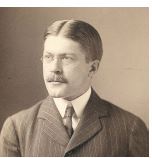
Pioneer in brain surgery,
social activist, and alumnus of
Univ of Penn 1889, PSOM 1892
During his chairmanship, he collaborated with Charles Harrison Frazier, Chair of Penn Neurosurgery, to pioneer spinal cordotomy (referred to as the Frazier-Spiller operation) to control lower body pain and to refine the surgical procedure for treating trigeminal neuralgia. He also supported Frazier’s technique of treating spasticity by resecting posterior spinal roots.
Little is known Spiller’s educational programs, but one of his trainees was the notorious Walter Freeman, creator of the transorbital or “icepick” lobotomy, which Freeman promoted aggressively and without supportive evidence in the treatment of severe mental illness in the pre-pharmacologic era of the 1930’s and ‘40s. Transorbital lobotomy
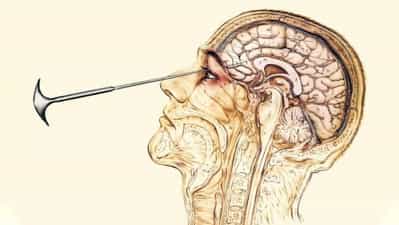
became widespread until eventually discredited because of disappointing results, including significant and often fatal complications. [See photo on right]
His scholarly output numbered 250 mostly case-based publications and several textbooks. During his presidency of the PNS in 1900, he presented a case of Landry’s ascending paralysis in a young pregnant woman with full recovery over three weeks despite significant quadriplegia.
Some of William G. Spiller's well-known journals and publications are listed below:
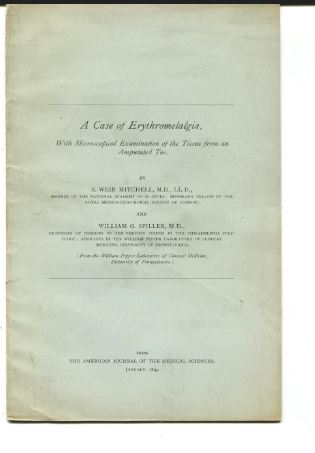
S. Weir Mitchell and William G. Spiller
Published by American Journal of the Medical, 1899
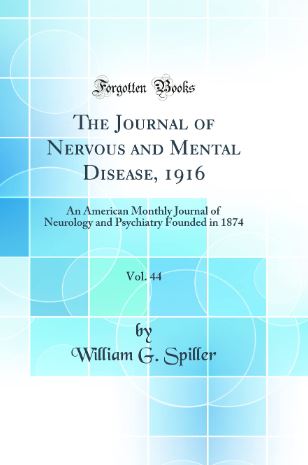
Dr. William G. Spiller

Dr. William G. Spiller
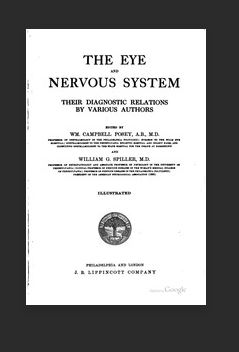
by William C. Posey and William G. Spiller
In 1908, he described a 12-year-old boy with “severe spasticity and athetosis,” which, in retrospect, was most likely a case of generalized or torsion dystonia (as shown in the photographs), and an early case of what Hermann Oppenheim later called “dystonia Musculo rum deformans” (DMD) in his classic and defining paper of 1911. In the modern era, DMD has been renamed DYT1 dystonia, often familial.
In 1919, he published a report with autopsy of patient with rapidly progressive multiple sclerosis in the Archives of Neurology and Psychiatry. He postulated without evidence that syphilis might have been an “agent provocateur” in promoting the malignant course and should be treated in all cases of MS.
Spiller was described as a quiet, frugal and serious man; a poor dresser; a dull lecturer but popular because of his fondness for quoting Shakespeare; and an excellent diagnostician. He was also known for his compulsion to keep an uncluttered desk and a sparsely appointed office.
References and Sources:
Chair photo: Courtesy of the National Library of Medicine. From the Images of the History of Medicine
(http://ihm.nlm.nih.gov/images/B30292)
WILLIAM GIBSON SPILLER, M.D. 1863-1940 | Archives of Neurology & Psychiatry | JAMA Network
Internet Archive: Digital Library of Free & Borrowable Books, Movies, Music & Wayback Machine
archneurpsyc_44_1_011.pdf (silverchair.com)
14 Facts About Walter Freeman II, The "Father of the Lobotomy" (ranker.com)
Major Discoveries and Events at Penn during this time
- 1905: Spiller was appointed President of the Philadelphia Neurological Society (PNS)in 1900 and President of the American Neurological Association (ANA)
- 1918: Philadelphia’s International Students House opened.
- 1920: Raymond Pace Alexander graduated from the Wharton School and later Harvard Law School. Alexander, a renowned Philadelphia lawyer, argued a number of cases concerning racial discrimination and was one of the more distinguished African American alumni.
Major Translational Research and Clinical Advances during this era
- Transorbital lobotomy became widespread until eventually discredited because of disappointing results, including significant and often fatal complications.
- His scholarly output numbered 250 mostly case-based publications and several textbooks.
- 1908: He described a 12 year- old boy with “severe spasticity and athetosis,” which, in retrospect, was most likely a case of generalized or torsion dystonia (as shown in the photographs), and an early case of what Hermann Oppenheim later called “dystonia musculorum deformans” (DMD) in his classic and defining paper of 1911. In the modern era, DMD has been renamed DYT1 dystonia, often familial.
- 1919: He published a report with autopsy of patient with rapidly progressive multiple sclerosis in the Archives of Neurology and Psychiatry. He postulated without evidence that syphilis might have been an “agent provocateur” in promoting the malignant course and should be treated in all cases of MS.
- Spiller was described as a quiet, frugal and serious man; a poor dresser; a dull lecturer but popular because of his fondness for quoting Shakespeare; and an excellent diagnostician. He was also known for his compulsion to keep an uncluttered desk and a sparsely appointed office.
People of this Era
pending content
